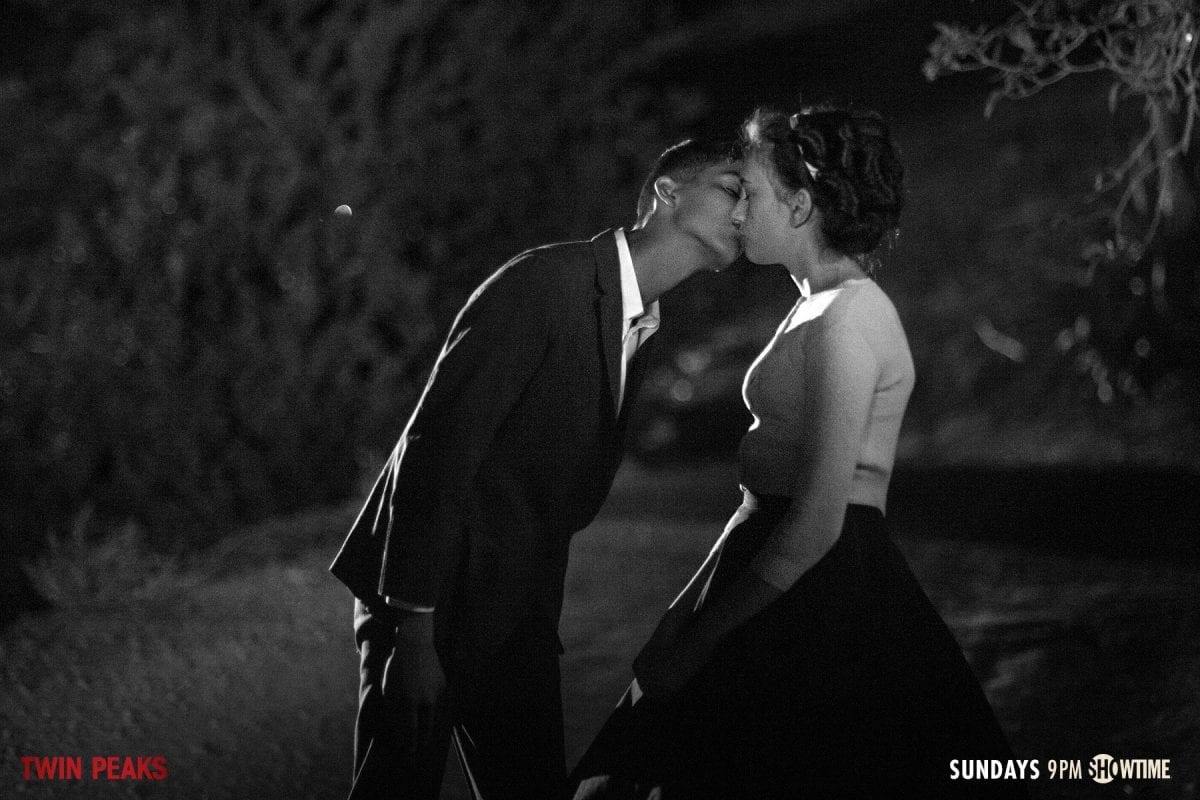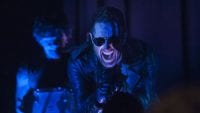In the early morning hours of July 16, 1945, deep in the New Mexico desert, a group of scientists, researchers, and military personnel stand at the ready. They are nearing the culmination of several long years of research, conducted in secret, in the hopes that they might decisively end the Second World War.
The components needed for their test on this day have only just arrived; President Harry S Truman had been eager to complete this test before the Potsdam Conference, which was to begin that very day, and urged the team to quicken their prep to accommodate. Ideal weather conditions were predicted for July 18-21, but they pushed ahead with the July 16 date anyway. It was supposed to start at 4:00 am, but a desert rainstorm postponed the final countdown by 89 minutes.
Finally, at 5:29:11, the countdown began. Ten seconds later, a device exploded with the energy equivalent of 20 kilotons of TNT. White hot light illuminated the dark pre-dawn desert; the sky filled with colours, from vibrant greens and purples to, eventually, brightest white; it was as if the sun had risen early and unexpectedly. Over 9000 meters away, personnel observing from the safety shelters waited 40 seconds to experience the shock wave, while the explosion itself generated a mushroom cloud that soared 12 kilometers into the sky.
Code-named Trinity, this was the very first nuclear detonation in human history, and it presaged the dark deeds committed on August 6 and August 9, 1945 when nuclear bombs were dropped on Hiroshima and Nagasaki, killing at least 129,000 people, mostly civilians, in the only use of nuclear weapons in the history of warfare.
Hour 8 of Twin Peaks: The Return places these events at the very heart of its myth-building exercise and does so to great effect. Anyone who has read The Secret History of Twin Peaks should not have been surprised at the inclusion of atomic bomb test sites in the main narrative of Twin Peaks; so, too, for those familiar with the inclusion of atomic mentions in the script for Fire Walk With Me. But even still, who among us wasn’t amazed at these sequences?
Visually and sonically, the approximately 24 minutes of screen time devoted to these scenes were a stunning display of just what David Lynch and Mark Frost can do when given total creative control over their work (and bless Showtime for granting it to them!) Thematically, however, this is a game-changer in the best and worst ways possible. What’s been suggested is that the atomic blast of 1945 ripped a hole in the membrane separating the world of the Black Lodge and our own, allowing access to denizens and spirits like the Woodsmen. Played over the scenes of cataclysmic destruction and chaos is Krzysztof Penderecki’s “Threnody to the Victims of Hiroshima”, which provides an audio mirror to the carnage we’re witnessing.
The political statement is clear: the use of the atomic bomb brought evil into this world. It’s a heavy metaphor.
 The origins of nuclear warfare in our world is not so cut-and-dried. As early as 1939, with war already having broken out in Europe, nuclear physicists Leo Szilárd and Eugene Wigner, who were on the forefront of nuclear fission (which had only just been discovered and properly categorized the year before) implored then-President Franklin D. Roosevelt to start work on weaponizing their discoveries before Nazi Germany developed the atom bomb first. Despite a policy of protectionism and isolationism, Roosevelt was moved to act, and the Manhattan Project was born, drawing such brilliant minds as Szilárd, Enrico Fermi, Otto Frisch, and J. Robert Oppenheimer together in the search for the nuclear bomb. They saw what they were doing as a moral imperative; it was, fundamentally, a fight between good and evil, Allied and Axis powers, and they had to win.
The origins of nuclear warfare in our world is not so cut-and-dried. As early as 1939, with war already having broken out in Europe, nuclear physicists Leo Szilárd and Eugene Wigner, who were on the forefront of nuclear fission (which had only just been discovered and properly categorized the year before) implored then-President Franklin D. Roosevelt to start work on weaponizing their discoveries before Nazi Germany developed the atom bomb first. Despite a policy of protectionism and isolationism, Roosevelt was moved to act, and the Manhattan Project was born, drawing such brilliant minds as Szilárd, Enrico Fermi, Otto Frisch, and J. Robert Oppenheimer together in the search for the nuclear bomb. They saw what they were doing as a moral imperative; it was, fundamentally, a fight between good and evil, Allied and Axis powers, and they had to win.
But it didn’t take long for those involved to recognize the horror that they had created. Szilárd himself, one of the original key proponents of development of atomic weapons, fought tooth and nail to prevent their use in war; James Franck headed up a commission whose singular goal was to report against the use of the bomb at all. Albert Einstein, whose Special Theory of Relativity was critical in the development of the bomb but who himself never participated in the Manhattan Project directly, famously stated that his one regret in life was signing the letter from Szilárd to Roosevelt in 1939 that prompted the beginning of the end. History has borne them out: the development and subsequent proliferation of nuclear weapons charged the Cold War and continues to cause significant concerns all over the world; India and Pakistan, North Korea, Russia, the United States…the threat of nuclear war has never truly left us since that fateful July morning.
Is there a more fitting time and place to begin your supervillain origin story than with Trinity? Even Los Alamos Laboratory director Oppenheimer himself got in on things, approving of the power suddenly within his grasp with a kind of villainous glee and a (mis)quote from the Bhagavad Gita:
“Now I am become Death, the destroyer of worlds.”
It’s hard to imagine any other singular event that could have inspired the Black Lodge in the minds of David Lynch and Mark Frost. Obviously there is no place (real or supernatural) from which “the evil that men do” could become literal. However, given that both of its creators grew up in the shadow of the Cold War, with the (literal and figurative) fallout of test projects like Trinity raining down on the American psyche, it’s not surprising that this would be the natural place for them to turn in order to explain the origins of their fictional monsters.1
But what does it say about the nature of this evil or the evil in mankind that this evil was brought into this world accidentally, regretfully (for the most part), and that it hasn’t been used since August 9, 1945? Are we as a species doomed by our hubris? Or is there hope for us yet?
Perhaps.
Perhaps humanity will save itself. The Return is not quite halfway to completion. Our hero Agent Cooper has yet to fully assert his power on-screen. It’s possible that his literal return to himself and to Twin Peaks will be the catalyst for restoring balance to the universe.
Or maybe humanity will need outside intervention. The Return isn’t free with any of its answers, and there is considerable room for interpretation. We see The Giant/??????? conducting some kind of ritual, hoping to reverse the damage with an 11th hour intervention involving Laura Palmer as an apparently manufactured force for good to combat the evil mankind has invited to its doorstep. Her seeming creation at the hands of an otherworldly being hints that something about her isn’t wholly human either. If true, this muddies the mythology considerably and has caused some to wonder about the implications of Laura’s story thus far.
If Laura has, somewhat like Dougie, been manufactured “for a purpose”, does this mean that Laura was always fated to suffer and die horribly? Could she have been saved, or chosen to save herself, if this was all supposed to happen? What does this mean for the end of Fire Walk With Me and its message of salvation for Laura’s soul? What does it mean for Laura’s humanity? We just don’t know enough to say much at all (although my esteemed colleague John Bernardy goes a long way towards arriving at a satisfying conclusion here).
Whether Laura is revealed to be some kind of supernaturally-charged creation, or if the  same is to be said of Agent Cooper (and arguments to support either Laura or Cooper as the possible Moonchild are quite convincing at times) or whether their humanity will be what saves them and us remains to be seen. What is certain is that the story of what’s been described as the worst evil humankind has ever perpetrated has suddenly imbued Twin Peaks with a sense of depth that is, at its core, rooted deeply in the fabric of our history. But when it comes to the overarching mythology of Twin Peaks, however, nothing is quite what it seems. I’ll be diving into some of the more prominent connections between the birth of the atom bomb and the origin stories of both Laura Palmer and BOB next week.
same is to be said of Agent Cooper (and arguments to support either Laura or Cooper as the possible Moonchild are quite convincing at times) or whether their humanity will be what saves them and us remains to be seen. What is certain is that the story of what’s been described as the worst evil humankind has ever perpetrated has suddenly imbued Twin Peaks with a sense of depth that is, at its core, rooted deeply in the fabric of our history. But when it comes to the overarching mythology of Twin Peaks, however, nothing is quite what it seems. I’ll be diving into some of the more prominent connections between the birth of the atom bomb and the origin stories of both Laura Palmer and BOB next week.
1 Here we come up against what literary theorists, critics, and English lit teachers alike term the “intentional fallacy”, which argues that authorial intent is neither knowable nor desirable in the process of understanding a text; since you can’t ever know fully what the author intended, it’s pointless to attempt a reconstruction backwards from the text to arrive at the author. There are several schools of thought on this arising from 20th century literary analysis, and it might be a mistake to assume that a childhood threatened by nuclear war would influence Lynch and Frost to such a degree that it pours out of their pens and onto the page decades later. But since The Return thus far has been so unabashedly autobiographical—for Lynch, in terms of referencing his past work, everything from his first short film through Mulholland Drive and Inland Empire; for Frost, in terms of leveraging his outspoken political leanings on Twitter into the larger political discourse of The Return—I think it’s more than fair to at least consider the possibility that the horrors of a nuclear holocaust live on in the minds of Twin Peaks’ creators and gave birth, quite literally in some ways, to aspects of the Black Lodge as seen in Part 8.




